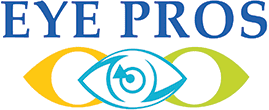Glasses or Contacts? 9 Irrefutable Reasons to Switch to Contact Lenses
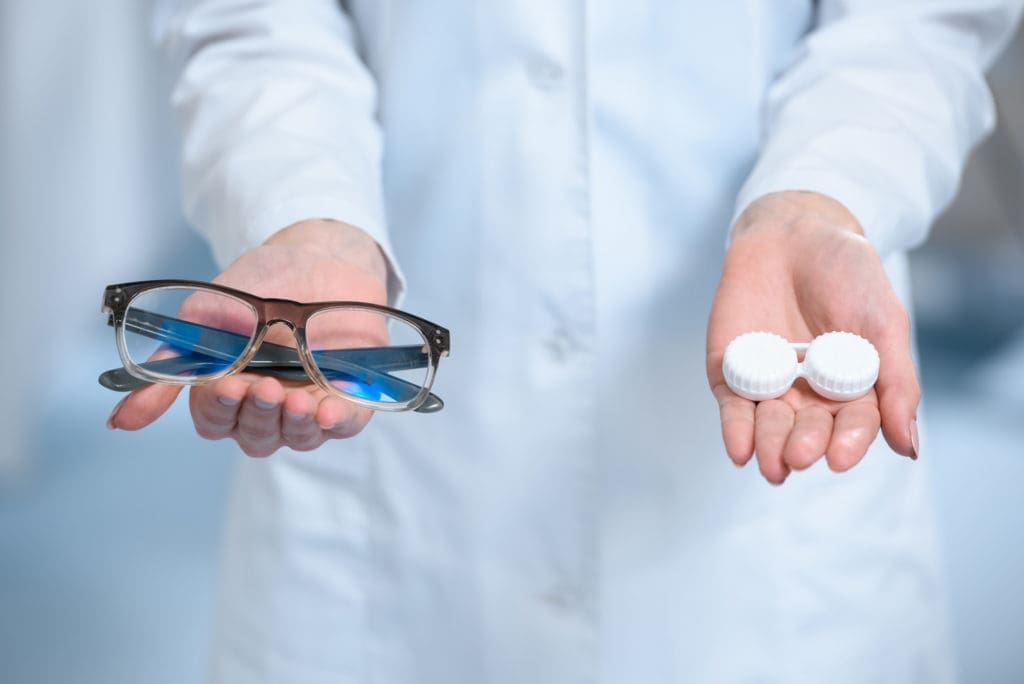
It seems as though more and more people are wearing glasses or contact lenses. In fact, studies show it’s undeniably on the rise. Maybe it’s due to the added screen time most Americans enjoy with smartphones, TV and movie streaming, and video games. Regardless, roughly 61% of us need some form of corrective lenses. Despite the added screen time, people still love going outside and being active. Unfortunately, glasses don’t support a super active lifestyle. While they do take less maintenance than contacts, they also have a lot of downsides. When trying to decide whether you want glasses or contacts, take a moment to consider all the benefits contact lenses have to offer. Continue reading for 9 irrefutable reasons why you should be wearing contacts! 1. No Glasses First and foremost, choosing contacts means you’re not toting glasses around with you wherever you go. Many people, especially new glasses wearers, tend to set them down and leave them somewhere. This could include losing them in your house or leaving them at a restaurant. It’s also easy to accidentally leave them at home for the day. Additionally, glasses aren’t the most sturdy of man’s inventions. The lenses can break, crack, or scratch with relatively little pressure or impact. Dropping, stepping on, sitting on, or scraping your glasses could mean needing to replace them. When trying to decide if you want glasses or contacts, think about how they will affect your day to day life. 2. Eye Color Options One of the most unique benefits of contact lenses to consider is the option of changing your eye color. There are some myths out there suggesting colored contacts can lead to a greater risk of eye infections, but they’re not entirely accurate. If you go to your local Halloween store and buy colored contacts over the counter, yeah, you’re risking potential eye infections. However, if you go to the optometrist and get prescription colored contacts, you have nothing to worry about. There are some things about colored contacts you’ll want to know about, though, such as care and options. 3. No Fog One of the biggest complaints from glasses wearers is how the weather affects them. Basically, glasses fog up either because we are breathing on them or sweating on them. The vapor hits the glasses and turns to condensation on the lenses. This is an especially common problem when it’s cold outside. While there are specific wipes and other tips to prevent this from happening, there’s really nothing to be done about rain. When it’s raining, you’re outside, and you’re wearing glasses, expect your vision to be impaired. 4. Support an Active Lifestyle Simply put, glasses and an active lifestyle don’t really support one another. Whether you’re playing sports, hiking, jogging, or skiing, glasses are going to be a hassle. While they may fit well, any quick movement or head jerk is going to send them flying. Additionally, the more active you are, the more likely you are to sweat, leading to more fog on your glasses. Impaired vision is the last thing you want while being active. 5. Overnight Orthokeratology, No Glasses or Contacts During the Day While you’re generally told you’re not supposed to sleep with your contacts in, there are special corrective lenses to temporarily correct myopia by reshaping your cornea overnight. Myopia is more commonly known as nearsightedness, and it’s actually the most frequent cause of impaired vision for those who are under 40. In fact, research suggests nearly 25% of people in the world are nearsighted. The effects of overnight Orthokeratology generally only last for one or two days. However, you don’t need glasses or contacts during those days, and it’s safe to wear Orthokeratology lenses every night. If you’re wondering if you want glasses or contacts, how about neither? Sleep with corrective contacts in overnight and be glasses and contacts-free throughout the day. 6. Wider Field of View Wearing contacts instead of glasses gives you a wider, clearer field of view. Contacts fit around the curvature of your eye, giving you better depth perception and a more natural view. The frames of glasses also obstruct your vision, not to mention the distortion of what you see through your glasses versus outside of them. 7. Style Wearing glasses changes your appearance. Some people don’t mind, some people even like the change. Although, there are definitely those who detest their appearance while wearing them. There’s no denying it, glasses make a big difference. Additionally, while glasses come in all types of unique and quirky styles, they may end up clashing with your outfit. For this reason, many people choose to own several different frames. Finally, wearing glasses with a strong prescription can make your eyes looked magnified and unnatural. This is not something most people find appealing in themselves. 8. Cost For most of us, when choosing between glasses or contacts, our first concern is the price. The average cost of daily disposable contacts including lens cleaner is $300 to $500 a year. It’s a relatively low cost, at a maximum of less than $50 a month. While many people may argue that glasses are much cheaper at a one-time cost of $300, that doesn’t include any special options many people choose for their glasses. These special features include anti-reflective coating, high-index lenses, progressive lenses, and special or designer frames. With special features, glasses can cost upwards of $1,000. Additionally, a single accident, such as dropping your glasses, can destroy them. If you consider potential repairs and replacements, wearing glasses can actually end up costing thousands of dollars a year. 9. Security Choosing contacts over glasses brings a sense of security with it. First of all, if you leave your glasses somewhere, it means your vision is going to be impaired until you find or replace them. With contacts, you put them in and forget about them. Sure, you can forget to put them in in the morning, but that’s a quick fix. Additionally, contacts aren’t susceptible to being broken in everyday life. You don’t
5 Reasons You Need To Make The Switch To Disposable Contacts Today
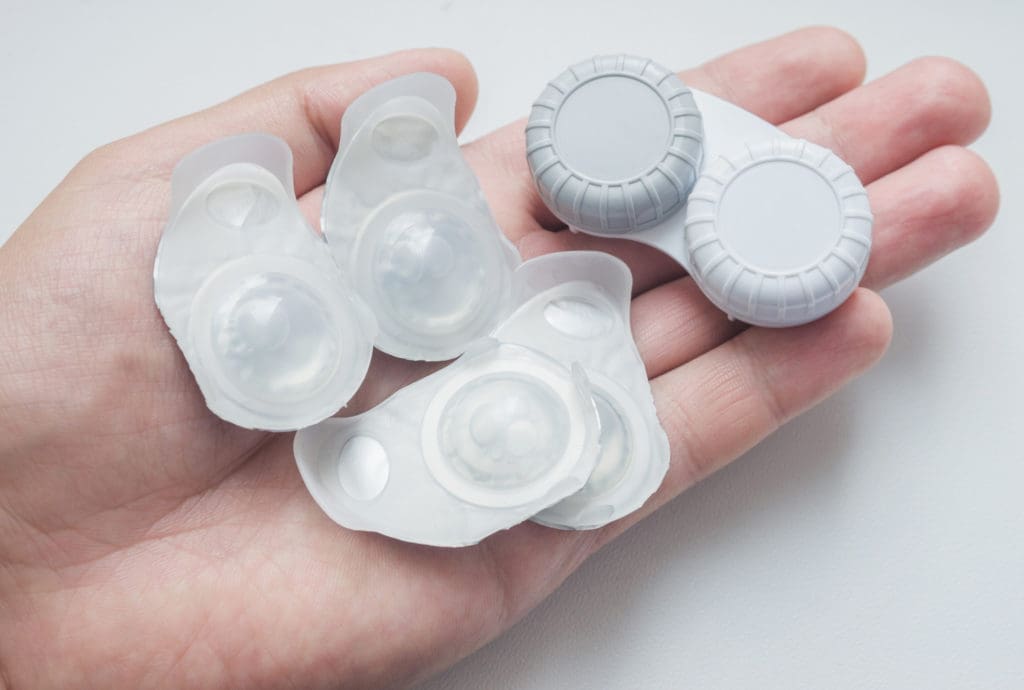
Over 150 million Americans need glasses or contacts to address refractive errors. While glasses now come in more styles than ever, more and more people desire contacts. Many prefer them due to aesthetics, participation in sports, or general comfort level. For real, have you ever tried laying on your side with glasses? While contacts and related technology have progressed over the years, many people are still fearful of putting something in such a sensitive part of the body. On the fence about contacts? Wondering which type would be best for you? Keep reading below for five top reasons disposable contacts are the smart choice! 1. Better for Your Eye Health Anyone who has worn yearly or monthly contacts knows they can become uncomfortable towards the end of their lifespan, sometimes even leading to issues like a contact lens is stuck due to protein buildup. Switching to daily disposable lenses significantly reduces these risks. Over time, calcium, proteins, and lipids that naturally occur in our eyes can build up on lenses. Our lovely eyeballs are exposed to airborne particles that can get stuck as well. Maybe you’re saying to yourself, “But I would clean them and disinfect them just like the doctor says!” Great, but in reality, doing so doesn’t completely get rid of all the possible build-up that can occur over time. With daily lenses, you have a sterile, fresh pair every day. This will substantially eliminate any chance for discomfort. Having fresh lenses every day also reduces the chances you could get an infection. Without perfect contact lens hygiene (hand washing and regular case disinfecting), bacteria can hang out and grow on lenses, ultimately reaching your eye. If this sounds scary, it should. Untreated eye infections can lead to permanent vision changes, including blindness. 2. Convenient for All Lifestyles Let’s face it. Sometimes we all are so tired in the evenings that we let our personal hygiene slide a little bit. Shout out to all the unused floss in our medicine cabinets. While our teeth won’t necessarily fall out by skipping a nightly brush here or there, going to sleep with contacts in means a rude awakening the next morning. Sometimes after a long night, removing and cleaning contacts can seem like a momentous task. But accidentally sleeping in lenses can lead to dehydrated and irritated eyes. Unless they are specific kinds, most lenses become dry overnight and are difficult to remove. Sleeping in contacts not designed for such use essentially cuts off the oxygen to your cornea. It also traps any allergens on your eye for the entire night. Switching to disposable lenses means you can say goodbye to this time-consuming routine. Instead of worrying about getting them squeaky clean, you can simply throw them in the trash! Disposable contacts are also great for those who travel. Instead of making sure you have a case and enough saline solution, you simply need to pack enough pairs for each day you will be there. Just remember also to pack a pair of glasses! 3. Easier Adjustment with Disposable Contacts Daily contacts are typically thinner than extended wear lenses. This makes them easier to adjust to for those completely new to contacts, especially if they’ve experienced uncomfortable contacts in the past. Work with your eye doctor. They likely will instruct you to wear them for a few hours a day to start and gradually increase the time. Until you are used to them, having lens-safe rewetting drops could be helpful. 4. Say Goodbye to Dry Eye Nearly 5 million Americans alone suffer from dry eye. People who try to wear contacts with dry eye experience even higher levels of discomfort. You might think it’s simply impossible to wear lenses with dry eyes, but that’s not always the case. Many daily options have a very high water content that gives a smooth surface to your eyes. Hydrogel lenses specifically have water-binding properties. These let the contacts retain more water than extended wear contact lenses. Sometimes dry eye can actually be caused by an allergy to preservatives. These allergies or intolerances can happen years into wearing lenses. Be sure to discuss issues with your doctor, who can recommend different solutions. Switching to disposables is one way to avoid this issue completely, as you won’t need to use any solution regularly. 5. Keep Your Wallet Happy Up front costs sometimes scares people away from testing out daily contacts. And yes, you will definitely pay more for the lenses than you would for monthly options. But keep in mind that with disposables, you no longer need to purchase solutions, cases, or cleaner! More good news is that daily lenses have continued to become cheaper and cheaper over the years. And there is no reason to think that trend will slow down. Most brands will also offer rebates for purchasing multiple boxes. These can be from $50 to $200! Keep Your Eyes Seeing Clearly for Years to Come As you can see, there are many amazing benefits of using disposable contacts. Whether you are completely new to contacts or a seasoned veteran looking for a healthier option, we hope this information was helpful! Looking for more information? Eager to discuss lens options that are right for you? Please contact us and we would love to help you out!
Puff There It Is! What You Need to Know About Glaucoma Tests
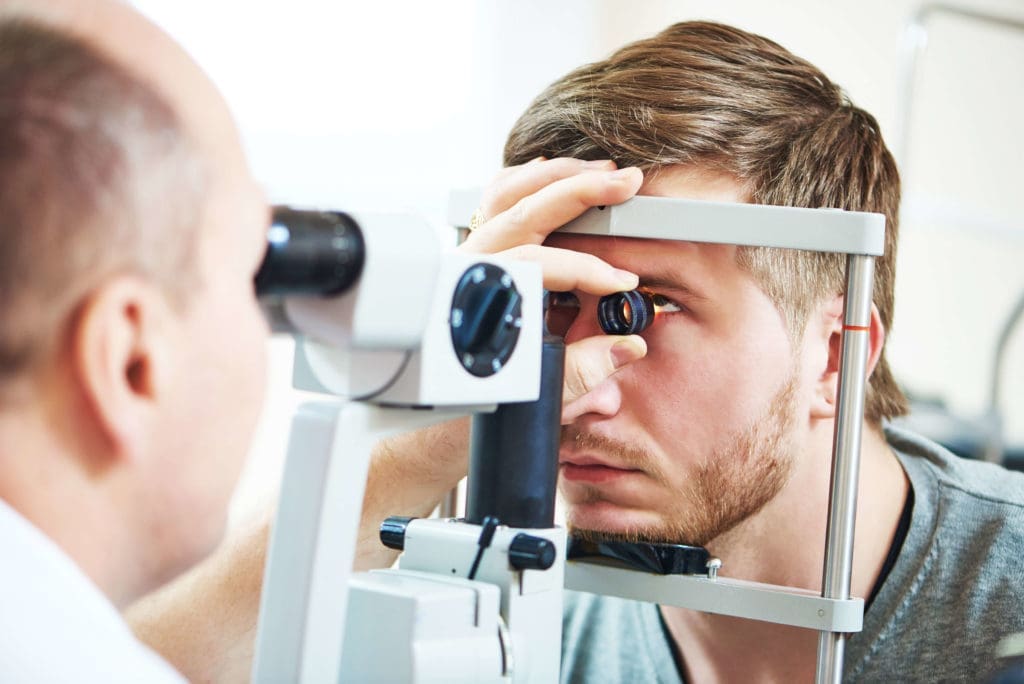
Three million people in the United States have been diagnosed with glaucoma, and several million are over the age of 40. Glaucoma is very common, but how do you know you have it? What is the glaucoma testing like? In this article, we’ll explore glaucoma and what to expect when you think you need to see a doctor. Types of Glaucoma There are two primary types of glaucoma: Open-Angle Glaucoma: The most common type, open-angle glaucoma occurs when the eye’s drainage canals become clogged over time. This blockage increases intraocular pressure, gradually damaging the optic nerve. The drainage angle formed by the cornea and iris remains open, but the trabecular meshwork is partially blocked. This type of glaucoma develops slowly and often goes unnoticed until significant vision loss occurs. Angle-Closure Glaucoma: Less common but more severe, angle-closure glaucoma happens when the iris bulges forward, narrowing or blocking the drainage angle formed by the cornea and iris. This blockage leads to a sudden increase in intraocular pressure. Symptoms may include severe eye pain, nausea, redness in the eye, and blurred vision. Angle-closure glaucoma requires immediate medical attention. Symptoms of Glaucoma The symptoms of glaucoma vary depending on the type and severity of the condition: Open-Angle Glaucoma: Gradual loss of peripheral vision, usually in both eyes Tunnel vision in the advanced stages Angle-Closure Glaucoma: Severe eye pain Nausea and vomiting Sudden onset of visual disturbance, often in low light Blurred vision Halos around lights Reddening of the eye Who Is at Risk for Glaucoma? While anyone can develop glaucoma, certain factors increase the risk: Age: People over 60 are at higher risk. Ethnicity: African Americans, Hispanics, and Asians have a higher risk of developing glaucoma. Family History: A family history of glaucoma increases your risk. Medical Conditions: Diabetes, high blood pressure, and heart disease can increase your risk. Prolonged Use of Corticosteroid Medications: Long-term use of these medications can raise the risk of developing secondary glaucoma. Glaucoma Tests and Procedures Detecting glaucoma early is crucial to preventing vision loss. There are several tests and procedures that eye doctors use to diagnose glaucoma: Visual Field Test (Perimetry): This test maps out your peripheral vision, which is often affected first by glaucoma. During the test, you’ll look straight ahead and press a button whenever you see a light flash in your peripheral vision. This helps the doctor determine if you have any vision loss related to glaucoma. Ophthalmoscopy: This procedure involves examining the optic nerve for damage using a special magnifying device. Eye drops are used to dilate the pupils, allowing the doctor to get a clear view of the optic nerve. Tonometry (Pressure Test): A tonometer measures the pressure inside your eye (intraocular pressure). Higher-than-normal pressure is a significant risk factor for glaucoma. The test is quick and painless, often involving a puff of air or a gentle touch on the eye with a device. Gonioscopy: This test examines the angle where the iris meets the cornea. Eye drops are used to numb the eye, and a special contact lens with a mirror is placed on the eye to view the drainage angle and determine whether it is open or closed. Pachymetry: This test measures the thickness of your cornea using a small probe. Corneal thickness can affect eye pressure readings, making this test important for accurately diagnosing glaucoma. FAQs About Glaucoma Testing What test is done to check for glaucoma? A comprehensive glaucoma exam includes several tests such as visual field testing (perimetry), ophthalmoscopy, tonometry (pressure test), gonioscopy, and pachymetry to assess different aspects of eye health. What is the best eye test for glaucoma? No single test can diagnose glaucoma. The best approach is a combination of tests, including tonometry to measure eye pressure, visual field tests to detect peripheral vision loss, and ophthalmoscopy to examine the optic nerve. What is a normal glaucoma test? A normal glaucoma test typically shows intraocular pressure within the range of 12-22 mm Hg, no damage to the optic nerve, and no significant loss of peripheral vision. What is the best diagnostic tool for glaucoma? The best diagnostic tool for glaucoma is a combination of visual field testing, which detects functional vision loss, and optic nerve examination through ophthalmoscopy or optical coherence tomography (OCT) to assess structural damage. What is the most accurate test for glaucoma? Optical Coherence Tomography (OCT) is considered one of the most accurate tests for detecting glaucoma. It provides detailed images of the optic nerve and retinal nerve fiber layer, helping to detect early changes. How long does a glaucoma test take? A complete glaucoma evaluation typically takes about 30-60 minutes, depending on the number of tests performed and the need for pupil dilation. After Diagnosis: Treatment Options Receiving a diagnosis of glaucoma can be challenging, but several treatment options are available to manage the condition: Medications: Eye drops are the most common treatment for glaucoma. They help reduce eye pressure by either decreasing the production of fluid within the eye or improving the outflow of fluid. It’s important to use these medications exactly as prescribed. Laser Therapy: Laser trabeculoplasty is a procedure that helps drain fluid from the eye, reducing pressure. This treatment is often used when medications alone are not sufficient. Surgery: If medications and laser therapy do not effectively control glaucoma, surgical options such as trabeculectomy or the insertion of drainage implants may be recommended to reduce intraocular pressure. Glaucoma Testing: Don’t Ignore It Catching glaucoma in its early stages is vital to receiving proper treatment. Once you start experiencing symptoms, it’s more challenging to treat. These glaucoma tests serve to help you make the best of your situation for as long as possible. Are you looking for an optometrist to check for the onset of eye disease? See how our team of qualified professionals can assist you!
The Big Switch: The Top Tips for Switching from Glasses to Contacts
Do you feel like Harry Potter? Not the magic part, but the constantly breaking your glasses part? Unfortunately, you don’t have a Hermoine to come and fix them. But you do have an eye doctor, who can address any frustrations you’re having with your glasses. If you think it’s time to transition from glasses to contacts, you might be right. Here are some things to think about before you do. Why Switch to Contacts? There are the obvious reasons to switch to contacts, like not having to clean your glasses all the time, but there are some medical benefits too. While, of course, they have risks, a lot of people do better with contacts than glasses. Here are some reasons why. 1. Personalized Vision Have you heard of transition lenses? If you have trouble seeing both far away and close up, you may even have them. Some people like to get transition contact lenses, which are an option. But your prescription can get even more personalized than that. Some people like to have one contact for far away and one for up close. The eyes will naturally adjust and use the eye that’s more equipped for whatever you’re looking at. People who don’t like transition lenses seem to love this mono-vision concept. It feels like more natural vision, especially if you’re getting contacts later in life. 2. They Don’t Break or Fog (Etc) While you can absolutely damage your contact lenses by dropping them or scratching them, they’re not as fragile as glasses. Since they don’t steam up or move around, you can wear your contacts during exercise. You also don’t have to remember your readers, if you have your contacts in. It gives you one or two fewer things to carry and more ease of movement when you’re on the go. They also don’t glare or reflect light, as glasses can do in certain situations. Finally, your contact covers the whole light-entering part of your eye, so there are no gaps in vision. (Like in the peripherals of your glasses. 3. They’re Invisible It’s perfectly acceptable and even stylish to wear glasses if you pick out the right pair for your face shape. But not all of us have the money or the selection to find a pair of frames we love. And others of us got made fun of as a kid and called names for needing glasses. Maybe you even get acne where the bridge of your glasses rests on your nose. Whatever your aesthetic reason not to wear glasses is, contacts can fix it. No one can tell you’re wearing contacts, unless they’re looking very, very close to your eyes. You can even get contacts in different colors, though your eye doctor most likely won’t recommend that. (Especially if you don’t need them). If you don’t need contacts and want to change the color of your irises, it introduces an unnecessary risk of infection. Most ophthalmologists are against this practice. At least long-term. Making the Transition From Glasses to Contacts Now that you’re sure contacts are the right choice for you, let’s talk about some details. There are risks in wearing contacts, which your doctor will talk to you about. Most of the risk can be mitigated if you follow your care instructions to a T. To reduce risk and get the best life from your lenses, follow these tips. 1. Always Wash Your Hands There was a pretty gross study that showed 50% percent of adults (averaged) don’t wash their hands regularly. And while that’s their business, you can’t be one of them if you wear contacts. Obviously, we recommend regularly washing your hands, but if you only do it twice a day, do it when you put your contacts in and take them out. When you put in contacts, you’re not only touching the membrane of your eye, you’re touching the lens. The lens can pick up dirt and bacteria from your fingers, which you then basically sandwich onto your eye. You can see how infections happen when people don’t practice good contact hygiene. 2. Don’t Switch Eyes When you get your contacts, they’ll come in a two pack- one for your left eye and one for your right. Your contact lens case should have a left and right reservoir as well. You don’t want to switch your contacts from one eye to another. Each eye has slightly different bacteria than the other. Mixing up your contact lenses can disturb the other eye’s natural eco-system if you will. 3. Don’t Overwear Your Contacts While there are options for affordable contact lenses now, the costs can still add up. To combat this, a lot of people wear dailies or weeklies for longer than they’re made to be worn. This is another time we see eye infections. Short-wear contacts can start to degrade or get damaged over time. Throw away your contacts when it’s time and open the new pair. 4. Start Slow Finally, the day you put your contacts in for the first time might be a struggle. Your doctor will walk you through how to put them in, but it feels a little funny and there’s a learning curve. If it takes you a few tries, be patient with yourself. You’ll get the hang of it! You may only want to wear your contacts for a few hours a day as you start out. Some people like a slower transition and others put their contacts in and never look back. Changing the Lens(es) Contact lenses have changed many peoples lives for the better. The majority of people who get contacts stick with them for life. Other people try the transition from glasses to contacts then find out it’s not for them – and that’s okay. But you’ll never know which one you are if you never try. Here are some more helpful tips for contact lens care if you want to see what kind of daily tasks you’re in for.
Important Do’s and Don’ts for Effective Contact Lens Care
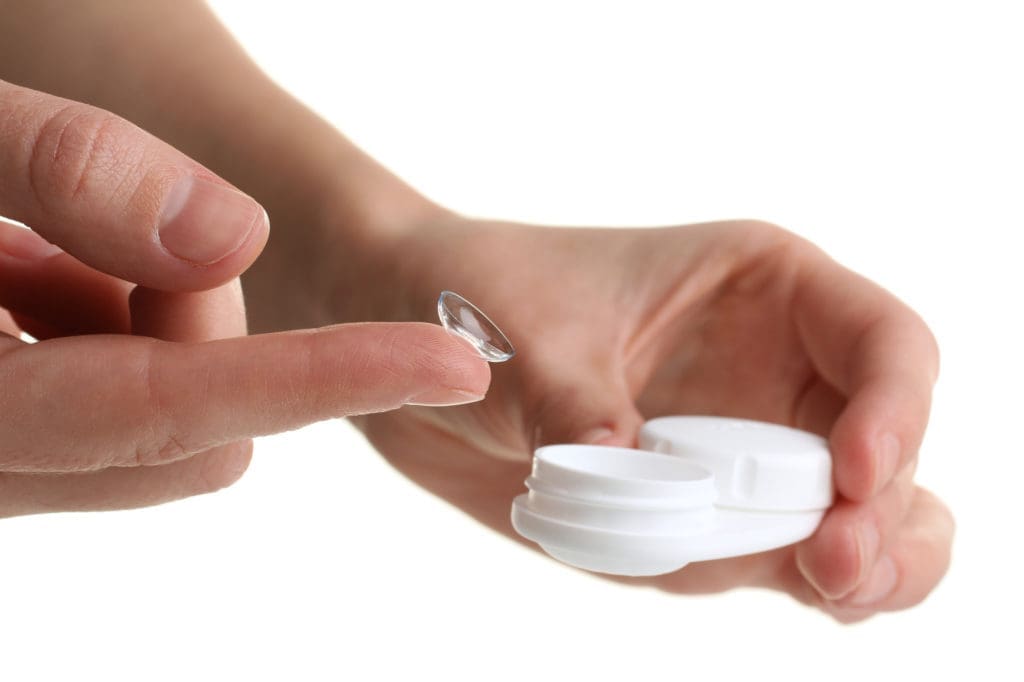
How good are you at taking care of your contact lenses? If you’re like most people, the answer is probably, “not great.” Forty-five percent of adults who wear contact lenses report wearing their lenses longer than they’re supposed to, and 32.9 percent report sleeping or napping while wearing their contacts. Another six out of seven contact lens wearers have admitted to engaging in at least one practice that puts that at risk of infection. If you’re not great at taking care of your lenses, or if you’re not sure what you should or shouldn’t be doing to keep them in good shape, keep reading. Listed below are some important dos and don’ts of proper contact lens care. Why Does Contact Lens Care Matter? Contact lenses have come a long way over the last few years, in terms of design and function. There are even contact lenses that only have to be changed once a month instead of every day. At the same time, these improvements have lulled some people into a false sense of security. Many people think that thanks to the advancements in contact lens design, they don’t have to clean or maintain them. That’s definitely not the case, though. Proper contact lens care helps to prevent a variety of infections and diseases. By caring your lenses properly, you can also avoid injuries like corneal abrasions. Some of these infections and injuries can permanently damage your eyesight, especially if you don’t address the issue right away. Dos of Contact Lens Care Clearly, contact lens care is important. But, what should you actually be doing to make sure you keep your lenses in good shape? Start by implementing the following practices: Do Stick to a Schedule Whether you’re supposed to change your contact lenses once a day, once a week, or once a month, be sure to stick to the schedule your doctor prescribes. Do Clean Your Lenses with Fresh Solution Empty out your contact lens case after every use and fill it with fresh solution. Use liberal amounts to make sure your lenses stay clean and moist. Do Use the Solution Your Doctor Recommends If your doctor recommends a specific brand or type of contact lens solution, be sure to use that particular brand or type. Remember, they recommended it for a reason. If you do want to use a different brand or type, talk to your doctor before switching. Do Inspect Your Lenses Before You Wear Them Always check your lenses for rips, tears, debris, or other types of damage. Do Remove Your Lenses at the First Sign of Irritation If your eyes start to feel dry, itchy, or gritty, or if they begin to look red or runny, take out your contact lenses and let your eyes “breathe.” Do Wash and Dry Your Hands Before Handling Your Lenses Always insert or remove contact lenses with clean, dry hands. This helps to prevent irritation, injuries, and infections. Do Keep Your Fingernails Trimmed It’s very easy to nick your eye or damage your contact lens if you’re inserting or removing them with long fingernails. Keep them neat and trimmed at all times. Do Insert Your Lenses Before Applying Makeup To avoid irritating your eyes or getting debris stuck to your lenses, be sure to insert your lenses before you apply eye makeup. And, take them out before you remove your makeup. Do Keep Your Contact Lens Case Clean If you’re cleaning your lenses but not cleaning your lens case, you’re going to have a hard time avoiding irritation and infections. Rinse out your contact lens case and clean it regularly before filling it up with lens solution. Do Go and See Your Doctor for Regular Check-ups Even if you aren’t experiencing any irritation or other issues, it’s still important to go see your eye doctor for regular check-ups. They’ll make sure your eyes are healthy and your contacts are working for you. Don’ts of Contact Lens Care At the same time, there are also some things you shouldn’t do if you want to keep your eyes healthy and prevent vision problems in the future. Keep these don’t’s in mind so you can take proper care of your contact lenses: Don’t Try to Extend the Life of Your Lenses Remember, stick to your doctor’s schedule. Don’t try to extend the lift of your lenses so you don’t have to re-order lenses as frequently. Don’t Use Water to Clean Your Lenses Only clean your contact lenses with lens solution. Never use tap water or saliva to clean them. Don’t Insert Ripped or Torn Contact Lenses Inserting a ripped or torn contact lens is a recipe for disaster, increasing the chances of a contact lens stuck in eye. If you notice any damage, throw the lens away and get a new one. Don’t Let Your Contact Solution Bottle Touch Other Surfaces If the tip of your contact lens solution bottle touches other surfaces, it could become contaminated. This, in turn, could put you at a greater risk of infection or irritation. Don’t Try to Reuse Solution Remember, clean out your contact lens case between uses. Don’t try to reuse the solution that’s left in there from the day before. Don’t Share Solution Sharing contact lens solution increases your risk of infection. Your eyes also might become irritated if you’re using a new solution that wasn’t recommended by your doctor. Don’t Wear Your Contact Lenses While Sleeping Wearing your contact lenses while you’re sleeping increases your chances of experiencing infections, corneal abrasions, or other injuries. Don’t Wear Contacts During Water Activities Never wear your contact lenses while swimming in a pool, lake, or ocean. Exposing them to potentially contaminated water could lead to infections and other serious issues. Do You Need New Contact Lenses? Have you been neglecting your contact lens care? Now that you know more about the dos and don’ts of caring for your contacts, you might want to start fresh with a new pair. If you need new contacts, or if it’s been a while since your last exam,
What to Expect When Visiting the Eye Doctor
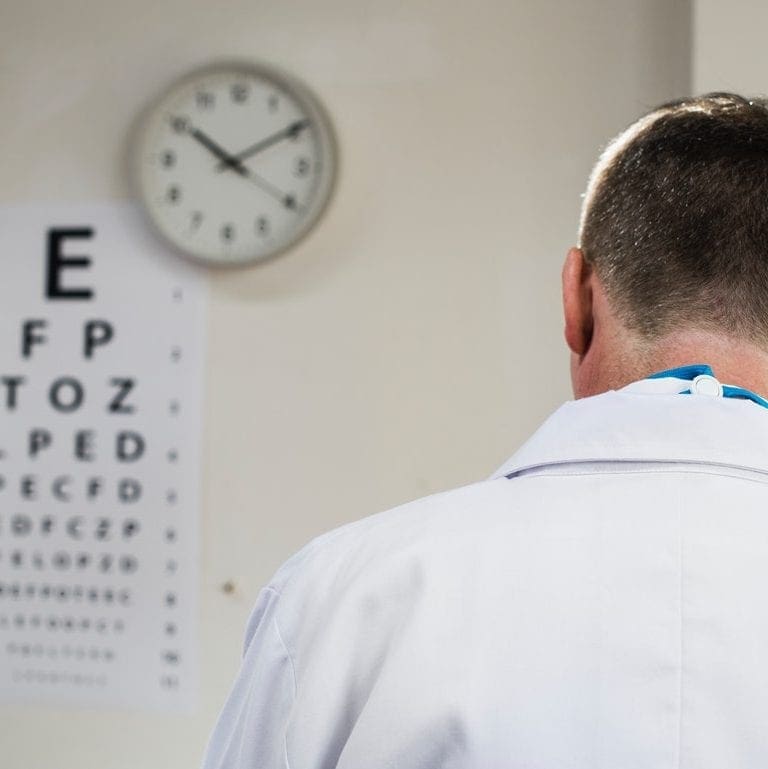
Your eyes are one of the most important organs in your body for obvious reasons. This is why it’s imperative that you visit an eye doctor regularly. Even if you have perfect vision, your eyes still need to be evaluated at least once per year. But, what should you expect at your eye doctor appointment? Especially if you’ve never been to the eye doctor, you may be feeling anxious. Not to worry. Thousands of people with and without vision problems have routine appointments all the time, with zero discomforts. If you’re curious about what a visit to the eye doctor is like, you’ve come to the right place. In this article, we’re discussing what you can expect at your eye appointment and a few tips for keeping your eyes healthy. Keep reading to learn more. Choosing an Eye Doctor Instead of simply searching for ‘eye doctors near me’ on the internet, consider asking for referrals from friends, family, and co-workers. There are likely several eye doctors in your area to choose from, and you want to know that you’re getting the best, most comprehensive care. Asking for referrals is a great way to learn about a particular doctor or practice before you visit so that you can feel more comfortable when you arrive. Otherwise, consider your reasons for visiting the eye doctor and base your decision on doctors specializing in that care. When to See an Eye Doctor If you’re experiencing vision problems, pain, or other uncommon symptoms with your eyes, it’s time to seek a doctor’s care. It’s important to note that not all eye diseases or other problems present any symptoms. That’s why it’s so important to see your eye doctor regularly so he or she can perform an exam to determine your eye health. If you feel like your situation is urgent, don’t wait to schedule an eye appointment. Consult emergency medical help instead. Your emergency physician will likely recommend you to follow up with your eye care provider. What to Expect at Your Eye Doctor Appointment Most eye appointments last no more than about an hour. This should be enough time for you to check in with the reception desk and fill out any necessary paperwork while you wait to be seen. Once in the exam room, your doctor will perform a series of tests and ask you some routine questions about your vision. There may be a nurse present during your exam to take notes for the doctor and ensure that your medical history is being thoroughly recorded. Patient History If you wear glasses or contacts, you should always bring a current copy of your prescription with you for your eye exam. Also be prepared, whether you have seen the eye doctor before or not, to list and detail any family history relating to eye health. This will give your doctor a better idea of what to look for in your own exam. You’ll also need a list of any current medications that you may be taking and of course questions you may have for your doctor. Finally, if your optometrist accepts insurance, you’ll need a copy of your insurance ID cards and co-payment, if required. Vision Tests A routine eye test is relatively simple. All you have to do is follow the doctor’s instructions as he or she presents you with images to view. The tests include both near and far-sighted vision as you read from a chart of random letters. Your doctor will also test your 3-D perception, peripheral vision (side view), and color perception. Regular Eye Exam Your doctor will use specialized tools to look into your eye and see how well your eye muscles are working. You will also be asked to look through a phoropter, which measures the refractive error of your eye to determine your spectacle lens prescription if you need one. Don’t worry, you won’t feel a thing. Notes on Dilating Sometimes, your doctor will want to dilate your eyes with mydriatics, which are used to enlarge the pupils of your eyes. When your pupils are enlarged, your doctor will be able to see the inside of your eye in great detail. It takes a few minutes for your eyes to dilate after the drops are administered. You won’t feel anything but you will notice that your vision is slightly enhanced and you will probably experience sensitivity to light. Your eyes will remain this way for several hours and you’ll need to wear absorptive sunglasses or lenses to protect your eyes until they return to normal. Some people do experience headaches after having their eyes dilated. This is usually due to light sensitivity. You can ask your doctor for a pair of temporary sun lenses that should prevent too much light from entering your eyes. Tonometry Especially if you have a family history of glaucoma, your doctor will want to perform a tonometry test using a tonometer. First, he or she will numb your eye using an eye drop sedative. You will be asked to look through the tonometer and your doctor will tell you right before a puff of air is released directly at your eye. A tonometer measures the eye pressure, which can indicate signs of glaucoma. Other Tests Besides your regular eye health, eye exams can help detect other health problems like diabetes, high blood pressure, and arthritis. He or she can recommend you to your primary physician to follow up if they find anything particular. Final Thoughts Visiting the eye doctor doesn’t have to be an overwhelming experience. In fact, it’s very interesting to learn about your eyes and how they work. Feel free to ask your doctor as many questions as come to mind so that you can best understand your own eye health. If you are experiencing vision problems more severe than what corrective lenses can fix, your eye doctor can recommend you to the proper specialists. When you’re ready to schedule your next eye doctor appointment, feel free to contact us. We have six locations
5 Reasons to Get an Eye Exam, Even if Your Vision is Fine
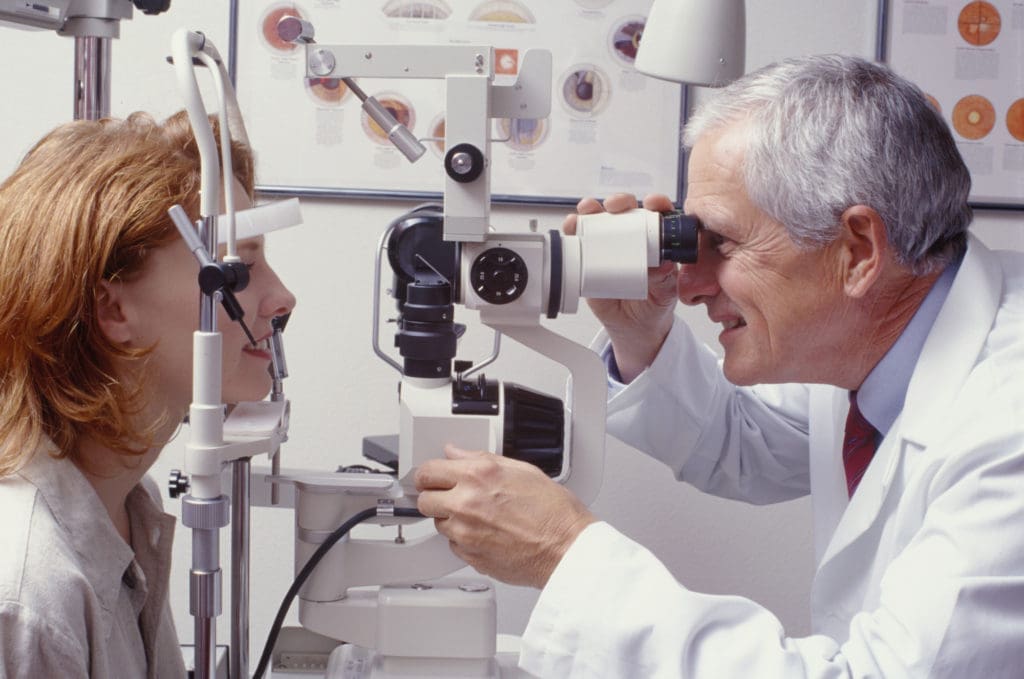
Ah, the dreaded eye exam. The idea of some stranger poking around your sensitive eyeballs is too much for some people to handle. And who wants to stumble around with impaired, dilated eyes all afternoon? We’ll tell you who. People who don’t want to go blind, have a heart attack or die of leukemia when it can easily be prevented. That’s who. There’s a lot more doctors look for during an eye examination than whether or not you need glasses. Regularly-scheduled eye exams are important for your overall health. Below are the 5 biggest reasons to get an eye exam, even if your vision seems fine. Check them out and then call your eye doctor to make an appointment. 1. It Helps Doctors Detect Non-Eye-Related Health Problems Most likely, your main objection is that you don’t need an eye exam or any other exam. Your eyesight is perfect, your hearing is perfect, everything seems fine. You feel as healthy as a horse. Unfortunately, that probably means you haven’t been to the doctor in years. And that’s a very big problem. If you never go to the doctor, how will you know you’re truly healthy? You may be developing high blood pressure or diabetes without even realizing it. The key to surviving many serious health conditions is early detection. By the time you start noticing symptoms and finally go to the doctor, there may be complications that are difficult or impossible to fix. Fortunately, many serious health problems can be detected in the early stages through standard ophthalmic tests (eye exams). These detectable health problems include: high blood pressure high cholesterol diabetes lupus leukemia Through regular eye exams, doctors often catch these problems while they’re still treatable. Scheduling your regular eye exam can save your life! 2. It Helps Doctors Detect Eye Problems Before You Do You can see everything without any trouble, whether it’s up close or far away. But being able to see clearly doesn’t mean you’re in the clear. Even if you score 20/20 on your vision test, you may still have the early onset of eye problems. Often times, you won’t notice any symptoms while vision problems are still in the early stages. But through an eye exam, eye doctors can still detect these problems that vision tests miss. But vision problems aren’t the only eye problems to worry about. There are worse ones, like cataracts and glaucoma. Aside from noticing symptoms, eye exams are the only way to notice these. And as we said above, the key to fixing any health problem is early detection. By the time you’re showing symptoms, the problem may be much more difficult to fix. The good news is, most eye problems are very correctable in the early stages. So schedule eye exams regularly. 3. It Helps Doctors Spot Progression of Eye Problems And if you do get an eye exam only to find that nothing is wrong, don’t think you’ve wasted your time. A clean bill of health at an eye exam is just as important as detection of a problem. The results of every eye exam you get will be used at your next eye exam as a reference point. If and when you do develop eye problems later in life, this will help your doctor will know approximately or exactly when the problem developed. This knowledge will be a huge help in treating the problem more quickly and effectively. 4. Your Vision Will Get Worse With Age It’s a sad fact that everything in our bodies deteriorates over time. Your eyes may not be the first to go and may even be the last. Still, the fact remains that your chances of developing eye problems increase as you get older. This is especially true of the worse problems, like cataracts and glaucoma. Also, these problems may come on so gradually that you don’t notice them until the more advanced stages. Avoid this unnecessary trouble by scheduling regular eye exams according to the chart further down on this list. 5. Vision Seems to be Getting Worse Regardless In recent years, there has been a significant increase in myopia (nearsightedness), especially among American children. In 2004, it was found that the occurrence of nearsightedness had nearly doubled in 30 years. Many suggest this may be due to the general child population’s increased use of electronic devices. Though, without enough clinical data, the true cause remains unknown. But there is clinical data to support the fact that myopia increases the chances of developing worse problems, like cataracts, glaucoma and retinal detachment. Those with myopia are shown to have an increased chance of developing these problems and with faster rates of progression. But the most important point to make is that myopia is highly correctible if detected early. While vision tests are helpful, a full, comprehensive eye exam is essential for early detection. This is especially important for children. How Often Should You Schedule an Eye Exam? Now that you know how important eye exams are, look here to see how often you should be scheduling one. Children under 3 will have their eyes examined at regular appointments with their pediatrician. At age 3, a willing child can undergo an eye exam. Children age 3 to adulthood have no estimated, suggested frequency of eye exams. However, with the recent increase of myopia, it would definitely be responsible to get your child in for an eye exam. This is also a good way to get them used to eye exams at a young age so they don’t fear them later on. For adults: Age 20 to 39: every 5 years Age 40 to 54: every 2 to 4 years Age 55 to 64: every 1 to 3 years Age 65 and up: every 1 to 2 years If you’re overdue, definitely make your appointment today. But as we’ve shown you before, there are very good reasons to get an eye exam yearly. Are You Overdue For Your Eye Exam? As you can
Monthly vs Daily Contact Lenses: Which Is Better for You?
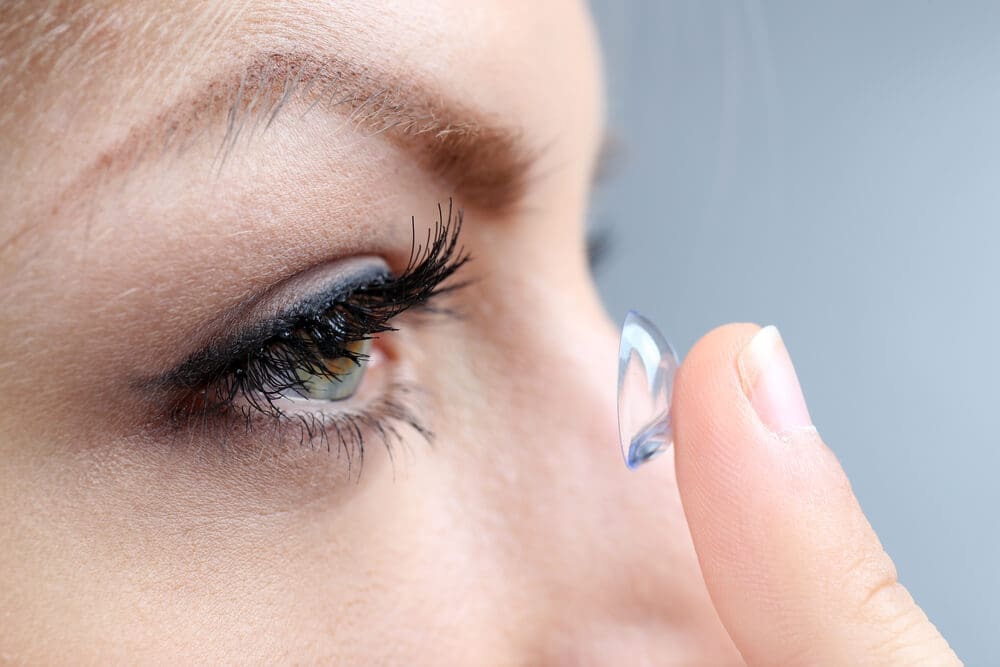
Did you know that 61 percent of the population wear either glasses or contact lenses at least sometimes? Many people are increasingly switching from glasses to contact lenses. Nowadays, over 45 million Americans wear contact lenses, according to the Centers for Disease Control and Prevention. But if you want to switch to contact lenses, it’s difficult to decide which is right for you: daily contact lenses or monthly contact lenses. Keep reading to find out about the pros and cons of each to help you decide what’s right for you. Let’s go! The Pros of Daily Contact Lenses Daily contact lenses are disposable single-use lenses. They are normally made from thin materials with high water content. Due to the deposits from your eyes that build up over the day, daily contact lenses are advised not to be used more than once. 1. Easy and Convenient Daily contact lenses are really convenient and easy to use. You just put them in during the morning and throw them away at night. This can save you lots of time since you don’t have clean them or store them overnight. 2. Reduced Risk of Infection Because they’re only worn for one day at a time, the build-up of natural deposits is much less. This means that you are less at risk of eye infections or allergies. You’re also unlikely to incur dry eyes for shorter periods of time. 4. Great for Newbies, Occasional Wearers, and Children Even though daily contact lenses are suitable for a wide range of people. They are especially appropriate for new wears who aren’t used to contact lenses. Dailies can be a better introduction to newbies. Younger people are more likely to rip or tear monthly lenses. This doesn’t matter so much when it comes to daily contact lenses. While occasional contact lens wearers often find that dailies are much better for them. If you only want to wear contact lens when you go out for an evening or do sport, it’s perhaps better to go for dailies. The Cons for Daily Contacts Lenses Now you know the benefits of daily contact lenses, let’s take a look at some of the downsides of dailies. 1. More Expensive It is usually much more expensive to use daily contact lenses than monthlies. Even though with monthlies you also have purchase solution to clean them, it’s overall still costly to go with dailies. 2. You Cannot Fall Sleep It’s definitely not safe for you to fall asleep with your dailies in your eyes. They are simply not designed to sleep with. You don’t want to risk it! 3. Not Environmental Friendly We live in a throw-away culture, disposable lenses are part of this culture. If you want to be environmentally friendly, you should look for an alternative to daily contact lenses. 4. It’s Easy to Damage Daily contact lenses are made of a thin and delicate material. While this allows them to be comfortable in your eye, it also means they are easy to damage and tear. The Pros of Monthly Contact Lenses Monthly contact lenses, or bi-weekly ones, are much thicker and robust than daily contact lenses. This makes them more resistant to drying out but they must be maintained in solution when not in use. Let’s take a look at the pros of monthly contact lenses. 1. Cost-Effective Even though you have to pay for the solutions for the lenses and any complications that may arise as a result of wearing monthlies, they are more cost-effective overall. This is especially true if you ensure that you follow the instructions of your optician. 2. You Can Sleep in Some Although it’s never recommended that you sleep in your monthly contact lenses, it’s not as harmful to sleep in monthlies. There are some kinds of monthlies that are approved for sleeping. It’s important to check this with your optician. 3. Monthlies are more environmentally friendly Instead of throwing away your daily lenses each day, monthlies can last you throughout the month. This makes them the environmentally friendly option because they’re less wasteful. The Cons of Monthly Contact Lenses Now you know the pros of monthlies, it’s time to find out what’s the negatives of getting monthlies. 1. Need to Be Cleaned and Stored You’ll accumulate a lot more build up of deposits with monthlies. This means that the risk of complications arising is much higher. This can be avoided if you ensure that you regularly clean and store them appropriately. But this can be a real pain to remember to do each day when you go to bed. 2. Easy to Forget It’s really easy to forget that your monthlies need replacing. Many people end up overwearing their monthlies over the approved period of time. Therefore, it’s essential that you set a reminder on your smartphone or calendar to replace your monthlies with new ones. 3. Expensive to Replace If you damage or lose your monthly contact lenses, you’ll have to replace them. Although monthlies are cost-effective compared with dailies over the entire year, if you keep breaking or losing them, it’s expensive to replace. Dailies vs Monthlies? Do you need to get contact lenses? It’s difficult to decide whether daily contact lenses or monthly ones are right for you. With our list of the pros and cons of each, you can make an informed choice which is right for you. If you live in Idaho and Utah and need help ordering contact lenses, contact us at The Eye Pros today. To better serve you, we have offices conveniently in Boise, Nampa, Twin Falls, Idaho Falls, Pocatello, Logan, Orem, Ogden, and Layton. We also make it easy for you to order contacts online, so you can get the lenses you need anytime, day or night!
What Happens When You Are Sleeping with Contacts?
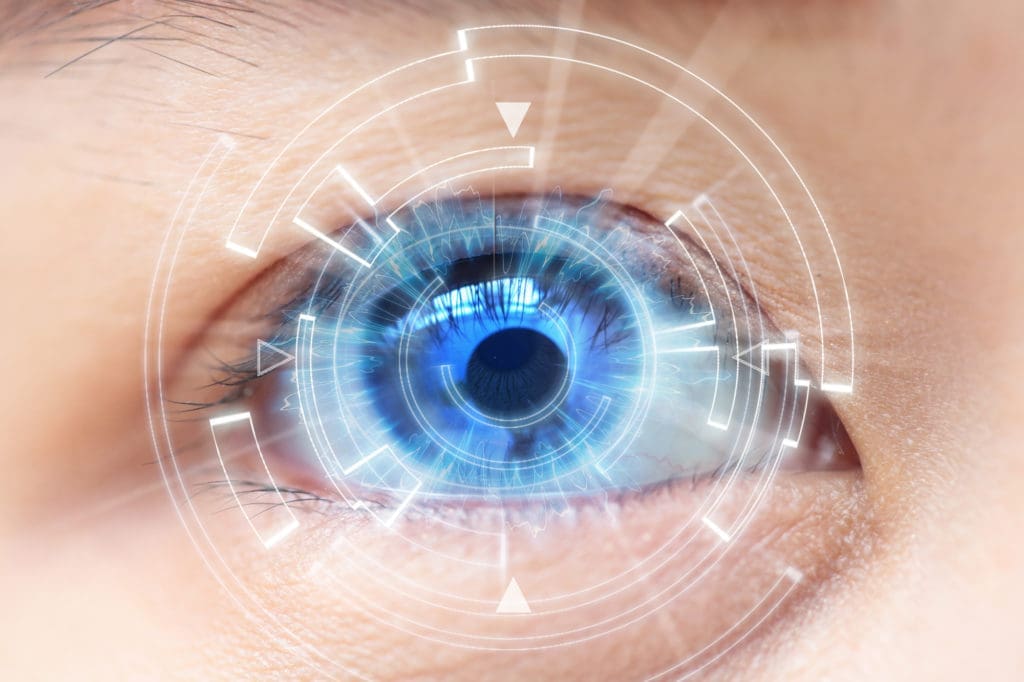
Are you one of the more than 30 million Americans who wear contact lenses? If so, are you changing them on a regular basis? Or, are you guilty of falling asleep while wearing them? Lots of people sleep in their contact lenses and are concerned about the effect this practice can have on their eye health. Is this actually a problem, or can you get away with it every once in a while without any issues? Your questions are about to be answered once and for all. Read on to learn exactly what happens when you sleep in contacts. What Happens When You Sleep in Contacts? You may have heard some horror stories about awful things happening to people after they sleep in their contact lenses. Is there any truth to these stories, or are they just scare tactics employed by eye doctors? While you probably won’t go blind after one night of accidentally sleeping in your contacts, there is definitely quite a bit of merit to these warnings. The following are some of the most common risks associated with sleeping in contact lenses: Increased Risk of Infection The cornea is only able to get oxygen from the air (as opposed to receiving oxygen from the bloodstream). When you wear a contact lens, you impede the cornea’s oxygen supply. When you close your eyes while wearing contact lenses, you further impede its supply. Reducing oxygen by this much, on a repeated basis, can lead to an increased risk of bacterial growth and eye infections. Your risk of infection also stems from the fact that the eye does not have the same level of immune system protection that the rest of the body does. Increased Risk of Long-term Damage When you sleep in your contact lenses, the inner lining of your eyelid sustains tiny abrasions and has a harder time maintaining proper lubrication levels. This, in turn, can lead to inflammation and drier eyes. If you sleep in your contact lenses for an extended period of time, you’ll be more irritation-, infection-, and allergy-prone. You may eventually not be able to wear contacts at all because your eyes are so damaged. Increased Risk of Inflammatory Conditions Your risk of inflammatory conditions like conjunctivitis (pink eye) and keratitis (inflammation of the cornea) also increases when you sleep in your contact lenses on a regular basis. Contact lens wearers are especially prone to a type of conjunctivitis known as giant papillary conjunctivitis. This condition causes small bumps to develop on the inner surface of the eyelid. It also is quite painful and increases light sensitivity. Contact lens wearers are also prone to a type of keratitis known as amoebic keratitis. In this condition, an amoeba infects the eye. Increased Risk of Vision Loss If keratitis goes untreated, it can lead to corneal ulcers. Corneal ulcers, in turn, can increase one’s risk of experiencing vision loss. A corneal ulcer is a sore on the cornea that is caused by an infection — often an amoebic infection. This condition is characterized by severe eye redness, discomfort, pain, excessive tearing, and changes in vision. In some cases, the vision loss brought on by a corneal ulcer is permanent. Other times, depending on the severity of the ulcer, vision can be restored with an expensive and invasive surgery known as a corneal transplant. If you notice signs of a corneal ulcer, it’s important to see your eye doctor immediately. The sooner you get treatment, the better. What about Sleep-Approved Contact Lenses? While, generally speaking, it’s not a good idea to sleep in your contact lenses, there are a few styles that are specifically designed for overnight usage. If taking your contacts out at night just doesn’t work for you, you may want to invest in one of these styles. Most of these lenses are designed for anywhere from 6 to 30 days of overnight usage before they need to be replaced. However, it’s important to remember that these sleep-approved contact lenses do not completely eradicate your risk of developing an infection or experiencing other issues. Many eye doctors recommend leaving these lenses out overnight at least one time per week, if not more often. This helps to give your eyes a rest and is an extra step you can take to prevent infection and reduce your risk of irritation. What to Do if You Fall Asleep While Wearing Contacts Despite all the warnings doled out from medical professionals, it still happens to the best of us from time to time. If you’re not wearing sleep-approved contact lenses and you accidentally fall asleep in them, there are a few steps you can take to minimize the damage and continue to promote good eye health. Remove them as soon as possible Soak your lenses in contact solution overnight if they’re still relatively fresh If you’ve been sleeping in old contact lenses, throw them away and start again with a fresh pair Use artificial tears or lubricating eyedrops if your eyes feel irritated or dry Consider wearing glasses for the day to give your eyes a break before putting in a new pair of contacts If you notice any pain, sensitivity to light, blurred vision, or extreme redness after sleeping in your contact lenses, you definitely shouldn’t put new contact lenses back in. You should also be sure to make an appointment with your eye doctor. He or she will be able to rule out infection and can provide you with eyedrops or other medicine to help prevent your symptoms from getting worse. Do You Need New Contact Lenses? If you’re someone who has a tendency to sleep in contacts, you might be in need of some fresh pairs. If you live in Idaho and need help ordering contact lenses, contact us at Idaho Eye Pros today. To better serve you, we have offices conveniently in Boise, Nampa, Twin Falls, and Idaho Falls. We also make it easy for you to order contacts online, so you can get the
6 Reasons Yearly Eye Exams Are so Important
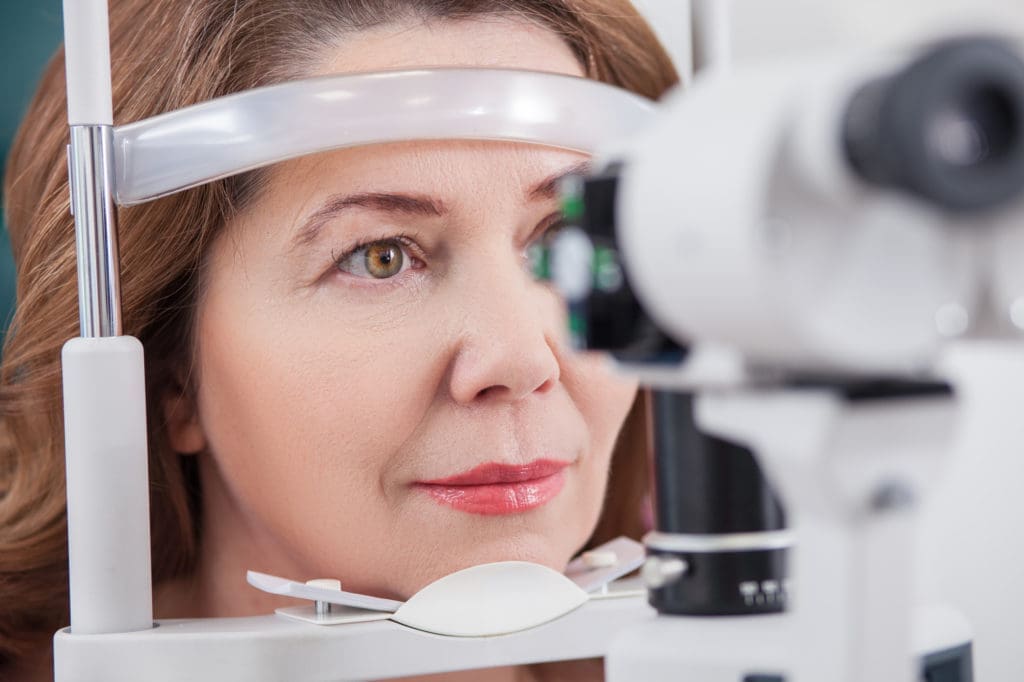
If you’re a lucky person that has perfect vision, you may not think much about visiting an eye doctor. But the truth is that everyone can benefit from seeing an eye doctor. Vision loss is the 9th most common disability in the United States. It can happen as a result of disease or an injury. And it can happen to anyone at any time. In some cases, regular eye exams can help prevent vision loss before it begins to affect your quality of life. Even if you have perfect vision, you should get checked out regularly to prevent problems before they start. Still not convinced? Check out these 6 reasons why eye exams are so important. 1. Up-to-Date Prescriptions If you need prescription eyewear to see well, you should absolutely see an eye doctor yearly. Your prescription may change slightly over time and you’ll need a new one to achieve good vision results. Contact lenses, in particular, can slowly cause damage to your eye if you aren’t caring for them properly. During a yearly check-up, your doctor will check to ensure that your prescription eyewear is clean, fitting well, and not causing any other problems. 2. Early Detection of Eye Diseases Even if you don’t use prescription eyewear, yearly eye exams are still important. Eye diseases can creep up on you with little warning. In many cases, by the time your vision is affected, the disease is already very advanced. There may be little your doctor can do at that point to save your vision. But, with early detection, it is often possible to slow or even stop the progress of the disease. This is true even if you don’t have a history of eye diseases in your family. While many eye diseases are hereditary, that doesn’t mean they can’t happen to you. Your eyesight is precious and not something you want to mess around with. 3. Detection of Other Health Problems In addition to detecting eye problems, many health problems can manifest in your eyes. Some of the things your eye doctor can detect include diabetes, high blood pressure, high cholesterol, and even some cancers. As with almost any disease, early detection is important and a big help in keeping the disease from progressing or causing too much damage. While this is true for everyone, it is particularly important for young children and the elderly. This is because these are both populations that are more susceptible to serious health issues. 4. Good Vision is Important for Learning Another reason that yearly eye exams are important for children and teens is schooling. Good vision is so helpful to the learning process. Much of what children learn in school is presented visually. An undetected vision problem can cause unnecessary hardship. Obviously, a child can still learn if they have trouble seeing, but it is much more difficult. Plus, if the problem is something like myopia (near-sightedness) or astigmatism, the right prescription can help the child. No one wants their child to struggle unnecessarily in school because of a problem that can be addressed. As a side note, don’t rely solely on the vision screenings that schools usually provide for children. These are often performed by volunteers and virtually never done by a trained eye professional. The only purpose of the screening is to ensure that the child can see. There is no actual exam and therefore no possibility of detecting any eye diseases or problems early enough to do something about them. Plus, there are many cases of children passing the screening even though they suffer from eye troubles. And parents are not always informed that their child failed the screening. To ensure that your child is receiving the proper care, take them to a licensed eye doctor. This is the number one way to keep up with any prescriptions your child may need and catch any diseases or problems early enough to correct them. 5. Good Vision Equals Good Quality of Life Good vision is integral to your quality of life. Of course, life doesn’t end for blind or vision-impaired people, but it does change drastically. Vision is a huge part of so much of what we do. If you lose part or all of your sight, you may find that you can no longer enjoy many of the things you enjoy doing. You will have to rearrange your entire life around dealing with vision loss. Thankfully, technology provides help for many people. But a simple eye exam every year can play a big part in ensuring that this never happens to you. It makes sense to take advantage of it. 6. Good Vision Will Keep You Safer Good vision is also important for keeping you safe. Whether driving a car or operating machinery, you need to be able to see what you are doing. If you can’t, see well, you may be putting yourself and others in harm’s way. Some types of vision loss can creep up so slowly that you may not even be aware of it. This can be even more dangerous. When you are aware of impairment you know to take steps to deal with it. But when you think you can see fine, you don’t know to be extra careful. Check out these 10 signs you might need glasses to find out if this is you! Schedule Your Eye Exams Today! Now that you know how important yearly eye exams are, do something about it. If you don’t yet have a good eye doctor, find one and set up an appointment today. If you’re in Boise, Nampa, Idaho Falls, or Twin Falls, Idaho we will be happy to serve you. Trust us here at The Eye Pros with your eye health. We offer personalized eye exams, eye health screenings for diseases contact lens fittings, and so much more! We’ll keep you seeing crisply and clearly the way you were meant to. Don’t hesitate to contact us for an appointment today!
